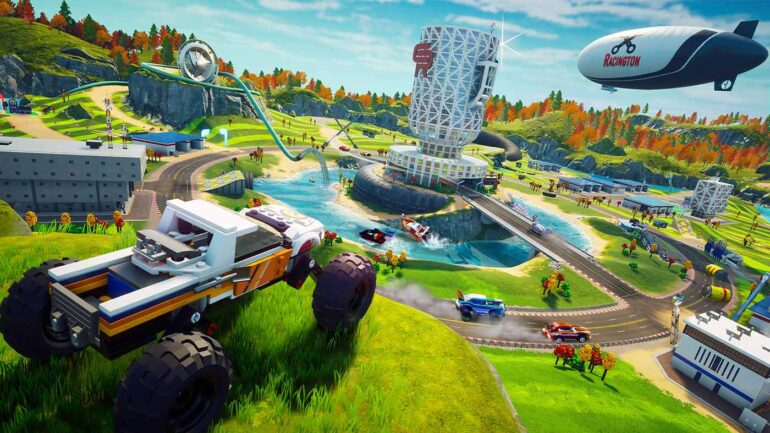As soon as LEGO 2K Drive, a new open-world driving adventure game from the folks at 2K’s Visual Concepts, was announced I knew I was all-in. The game promises a proper, open-world gameplay experience that’s based around the idea of vehicles and racing but with the sense of fun and discovery of a LEGO game.
To learn a bit more about the team’s approaching to designing this open world and making it an engaging and exciting space for all kinds of players, I was lucky enough to chat with Visual Concepts’ Design Director, David Msika, and Lead World Designer, Jon Dunsmoor.
“When we set out to build an open world, there were a few guidelines that we wanted to adhere to, based on our core values for gameplay and for the game as a whole,” begins Msika.
“The first and most important one was to make it feel ‘LEGO.’ This is a LEGO game, so we have as much LEGO as we can from the buildings, the signs, the vehicles, the minifigures, all of that makes up a very complex sort of urban planning of LEGO sets. On top of that, we have the organic side of the biomes, which are all inspired by what LEGO looks like.”
“So everything has to be reminiscent of LEGO but also the tone. LEGO is tongue in cheek, the humour is accessible by all. So that, again, needed to also be accessible by all, with everybody finding something that they would love in it. It’s an open world, so obviously promoting exploration and discovery was super important for us. And that’s why we created the open world in a way that every corner has something for you to discover, like an activity or a little story vignette.”
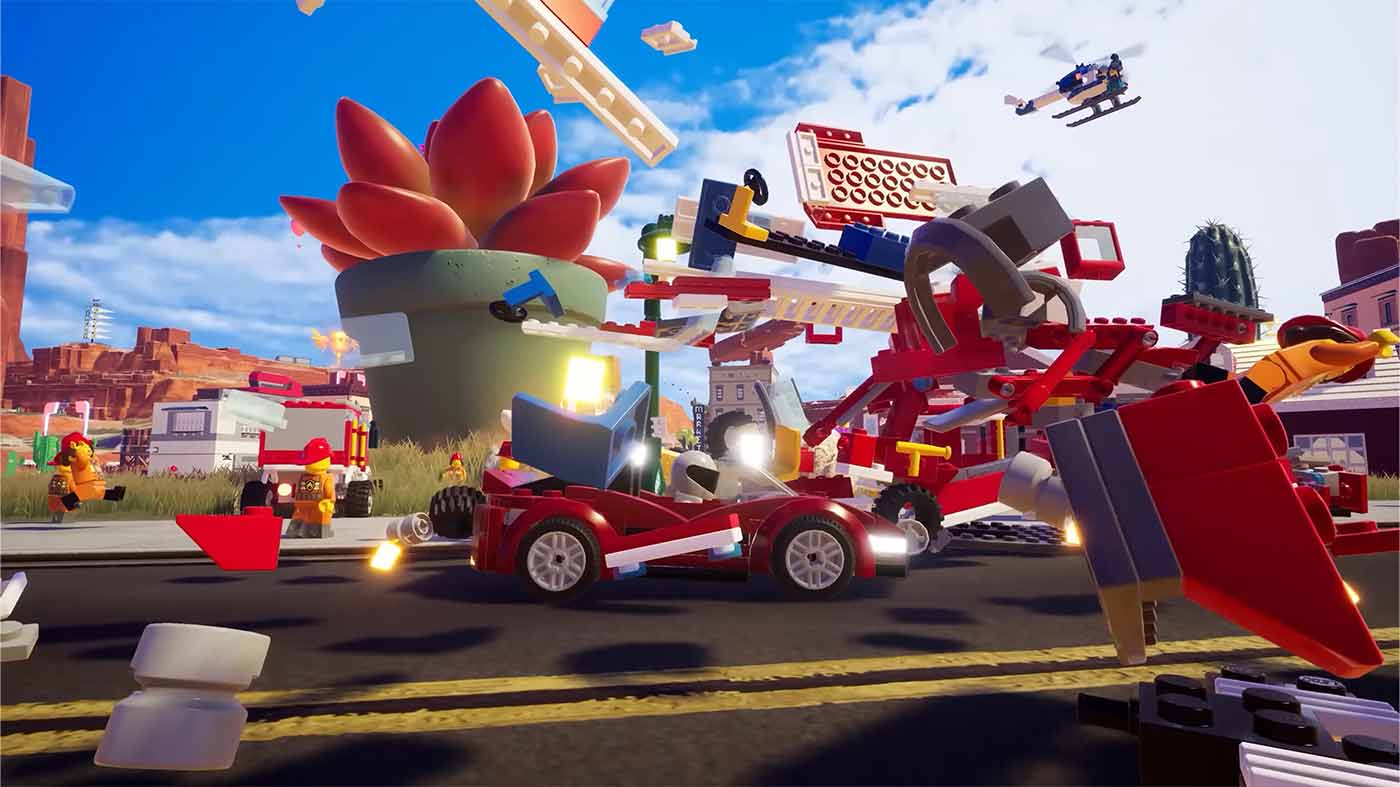
To support their visions for this open world, the team at Visual Concepts focused on three core gameplay pillars – transformation, destruction and the driving model. Msika says that thinking about each of these was a huge influence on how the world itself was designed. The idea of player vehicles being able to instantly transition from being a street vehicle to off-road vehicle or watercraft meant that they really needed to plan for where surfaces were placed within the world, for example.
Similarly, destruction felt important from a LEGO perspective – after all what’s the only thing more fun that building a LEGO creation? Busting it to pieces, of course. So the team populated the game with things to destroy, and promoted and contextualised the idea by making it so destroyed LEGO objects add health and boost back to the player.
Lastly, the driving model was crucial to how LEGO 2K Drive’s open world was designed because the team sees the vehicles here as the player’s direct connection to the world, their very LEGO avatar on wheels as opposed to a secondary tool.
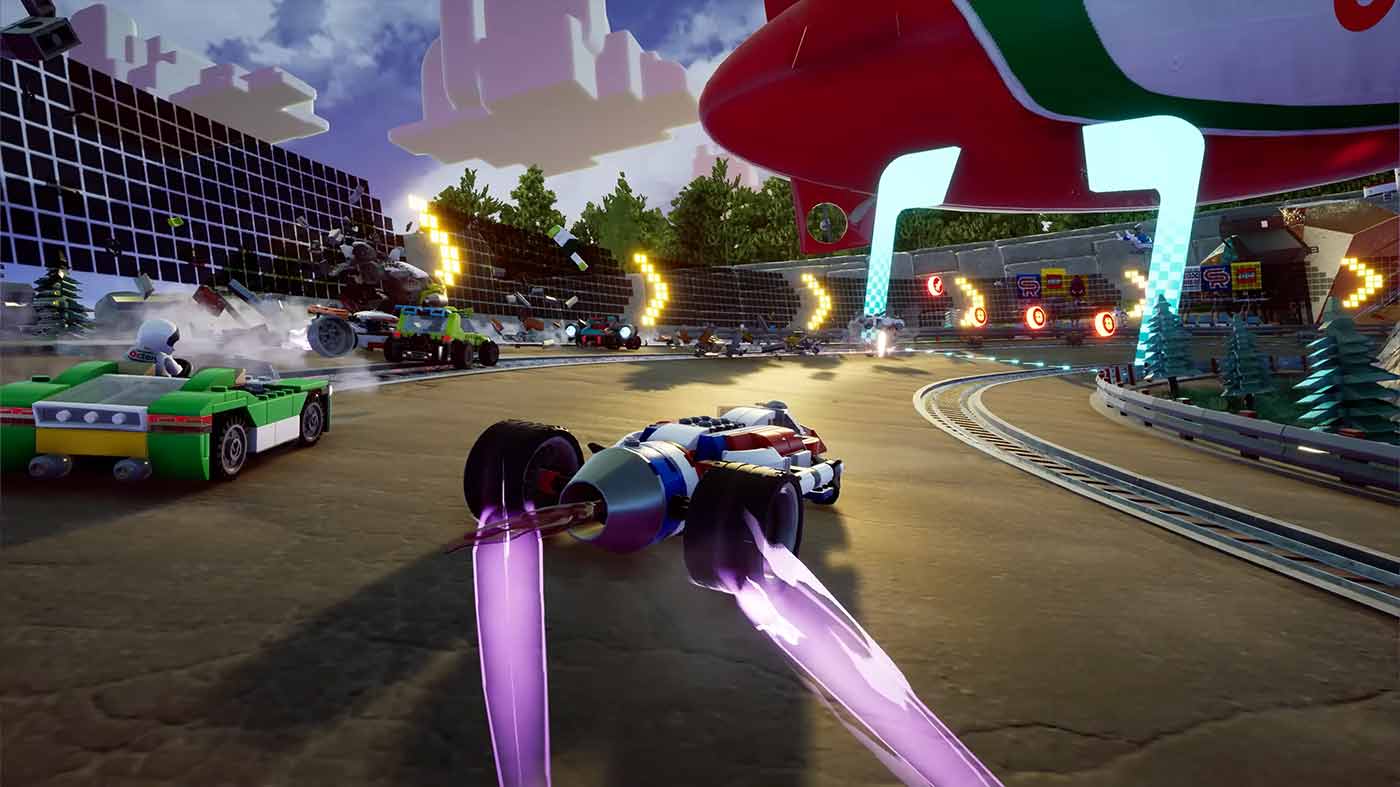
“People need to understand that the vehicles in the game – they’re your character. It’s not just a car that you get into, it’s you. You can walk, you can run, you can sprint, you can jump, you can use weapons, you can turn around quickly, you can climb the environment. It’s all of these things that a biped will normally do in an adventure game, but you do it as a vehicle. It’s interesting because as a vehicle you move at 150 miles an hour, so that creates a new paradigm to think of whenever you think about, you know, moving around. Those are all the things that we based building the open world on.”
So the world is big, and it’s also jam-packed with things to see, do, collect, destroy and just marvel at. In a landscape where open worlds in games mean so many different things, I was curious as to where the folks at Visual Concepts were positioning this one and what points of appeal they were trying to hit with the LEGO audience.
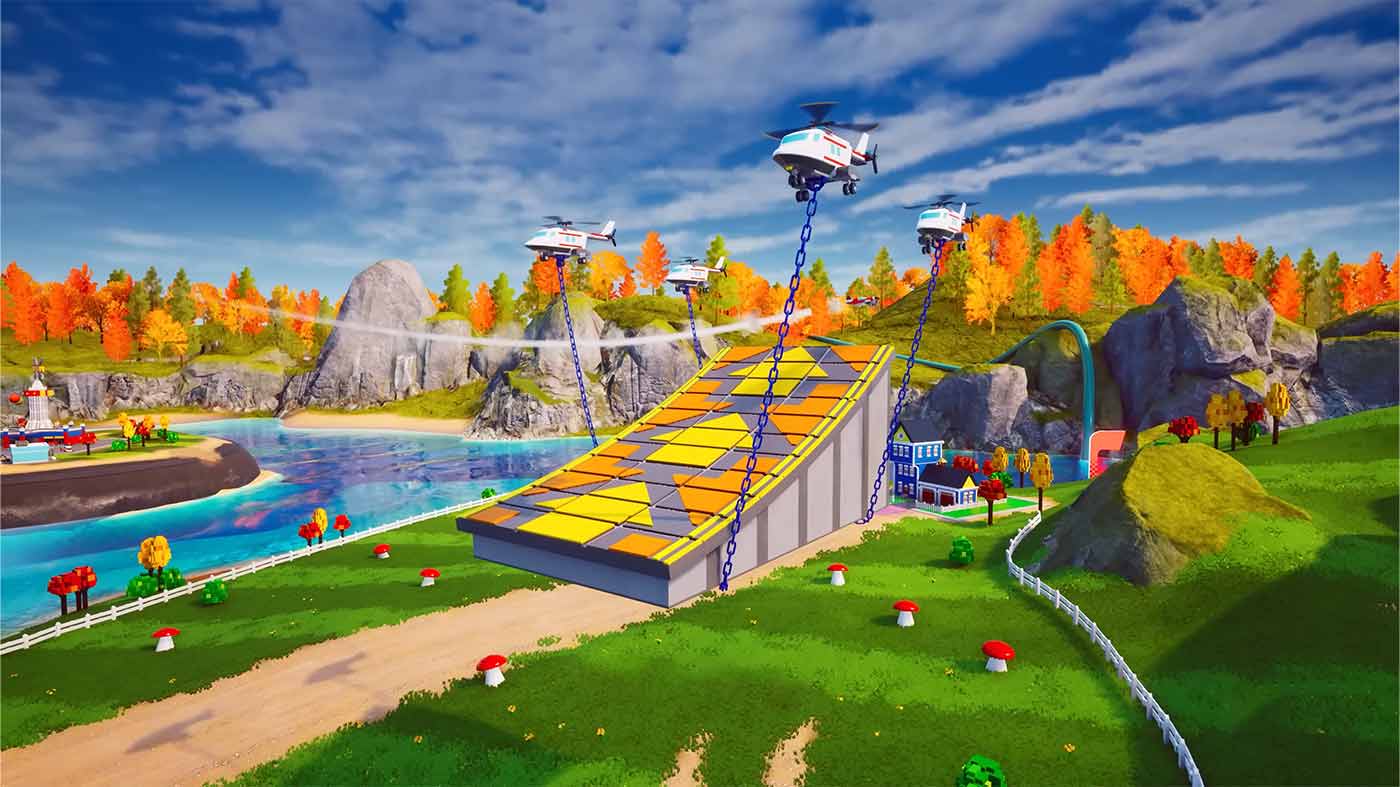
“We found there are four types of players that play our games, and we need to make sure that we have something for all of them,” Msika explains. “The younger they skew, the less they care about goals – they do their own thing, they explore and it’s fine. We’ve seen kids spend 30 minutes just exploring in the open world and you’re just like, just play that race! Right? But we don’t want to force them into it because they’re having fun just messing around.
“And then you have the people that are interested in progression. Those are the people that are going to be hitting all the beats and not do any side activities until they’re done. And then there’s the people that want to hone their skills and these people are going to be really going hardcore on the on-the-go events, trying to get gold, getting to all the levels to get the best stats. And finally, the fourth type of player is the people who just want to be in the garage, customising and building.”
Msika says that hitting these four categories of players was important to the team because LEGO is for everyone, and they wanted to be able to provide those experiences that cater to everyone without ever making them feel like they’re missing out on something or should be doing something else.
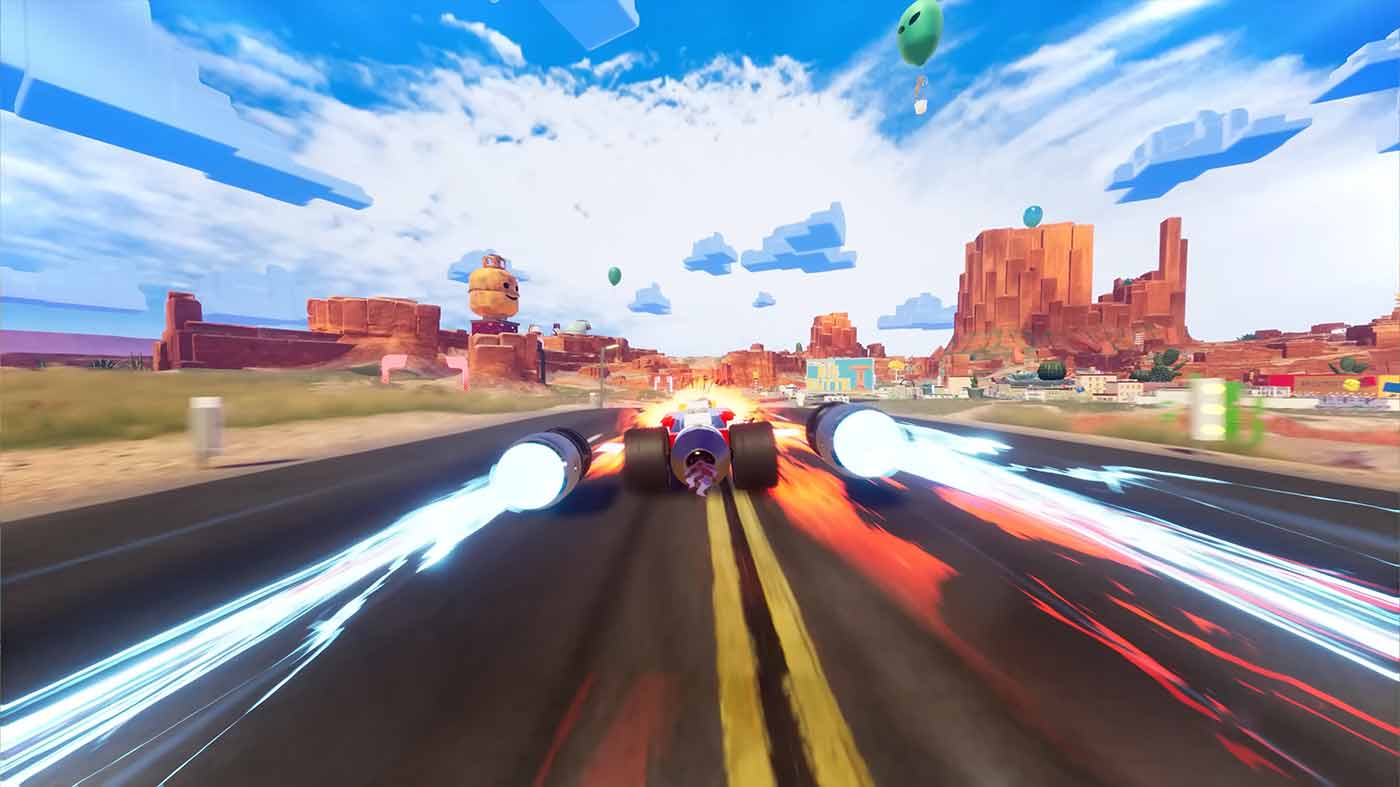
It made a lot of sense to me, as an adult gamer with a time-consuming job and plenty of boring life responsibilities, to make sure this is a game packed with content and things to experience without being overwhelming or asking for too much of my time and attention, a point-of-view that the team seems to be keenly aware of.
“You might get a game that has a single player campaign that’s really awesome. But it also comes with multiplayer, and so you never touch that single player campaign,” Dunsmoor adds.
“We also cater to that crowd as well, which is a lot of people don’t have time that are older (gestures at self) that want to get a chance to play the game, and don’t want to go through all of that preamble to get to the gameplay and just want to jump in and be able to play. So we have that component as well – it’s juggling our own mindsets, getting into the mindsets of the players that we’re going to have for the type of content that we’re making.”
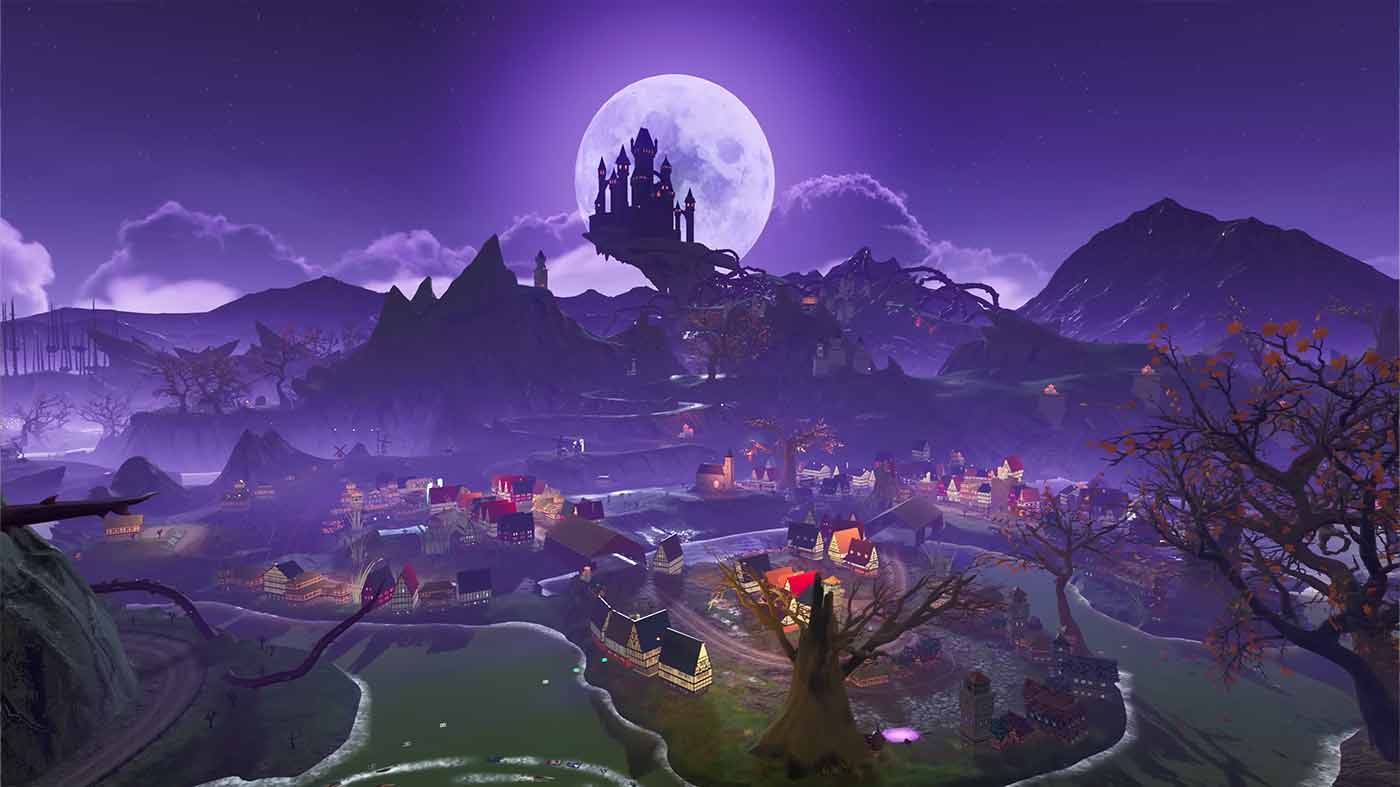
Despite the open-ended design, LEGO 2K Drive will still feature a traditional story path through its four biomes, from the starting area of Turbo Acres through to the desert sands of Big Butte, the lush Prospecto Valley and the spooky Hauntsborough. The team implies it’ll be a pretty brisk direct path through these without a terrible amount of gating and nothing to stop players from zipping back and forth between areas to complete anything they left behind.
The game’s approach to vehicle building, while an obvious choice given the modular nature of LEGO, is also borne of these same ideas of giving people the tools to have fun the way they want to while introducing as few barriers to their imagination as possible and still maintaining a good gameplay experience.
“You can build your car a certain way that’s going to have certain effects, but we don’t want it to sabotage the gameplay entirely,” says Dunsmoor. “We don’t want you to build something that’s just going to break, or build something that fails. So we do have to put in certain guardrails, but still allow the changes that you make and the way you build something to affect gameplay.”
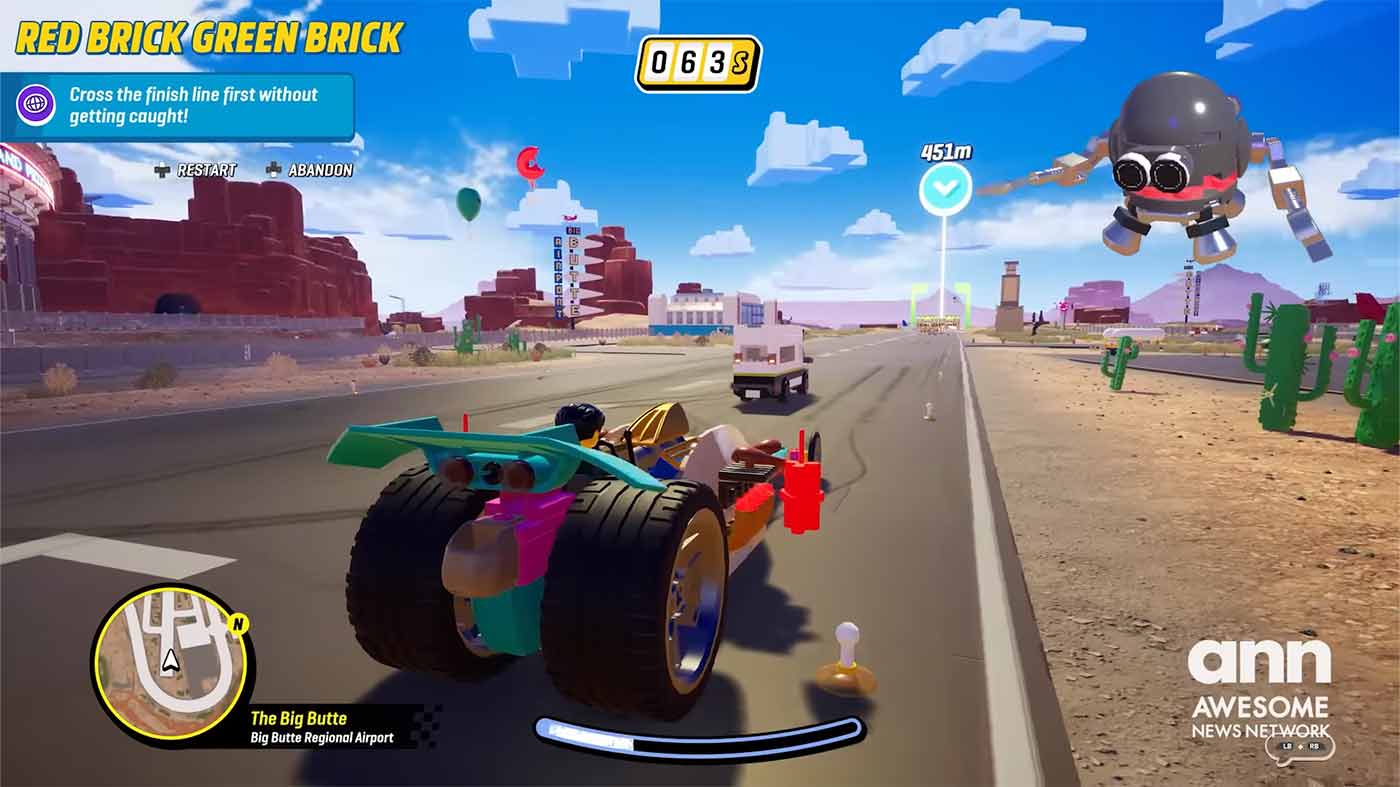
Those safeguards are there purely just to ensure that what you’re creating is still capable of racing at a basic level, still viable with being able to do things like drift correctly. But players will still have the freedom to tailor and make inventive vehicles that have a tangible effect on how they play.
“If you want it to just be hilarious looking, but have no purpose, great, you’re still gonna be able to race, you’re still going to be competitive. You’re not going to be at a disadvantage for making something super silly, or making something that’s built for a purpose – you’ll most likely be able to serve that purpose by the way that you build it, but you’re never going to be able to build yourself into a corner where you just can’t have any fun and you’re just constantly getting snagged on stuff or getting flipped around or getting screwed over too badly.”
Msika jumps in with a couple of interesting examples of how members of the studio have found themselves designing vehicles intentionally to tackle in-game objectives in ways that played within the bounds of LEGO 2K Drive’s gameplay systems but weren’t intended or expected by design.
One example saw one of the team struggle to complete a golf-like activity in a “regular” car, and so they went back to the garage and designed a vehicle that actually resembled a golf club and beat the mission that way. Another similar instance happened with someone tasked to ferry a giant egg to a giant frying pan, who added an egg-shaped scoop to the front of their car to gently and accurately carry the payload to its destination.
I think that’s what excites me most about LEGO 2K Drive and its open world currently – the idea that not only is there freedom in what players choose to see and do within this new LEGO-fied world but also in how they engage with it. I’m especially keen to see what creative and ridiculous vehicles players manage to concoct following the game’s launch next month.
LEGO 2K Drive launches on May 19th for PS5, PS4, Xbox Series X|S, Xbox One, Nintendo Switch and PC. Amazon has the cheapest pre-order price at $79 (PS5/Xbox) and $74 (PS4/Switch) for the standard edition.


